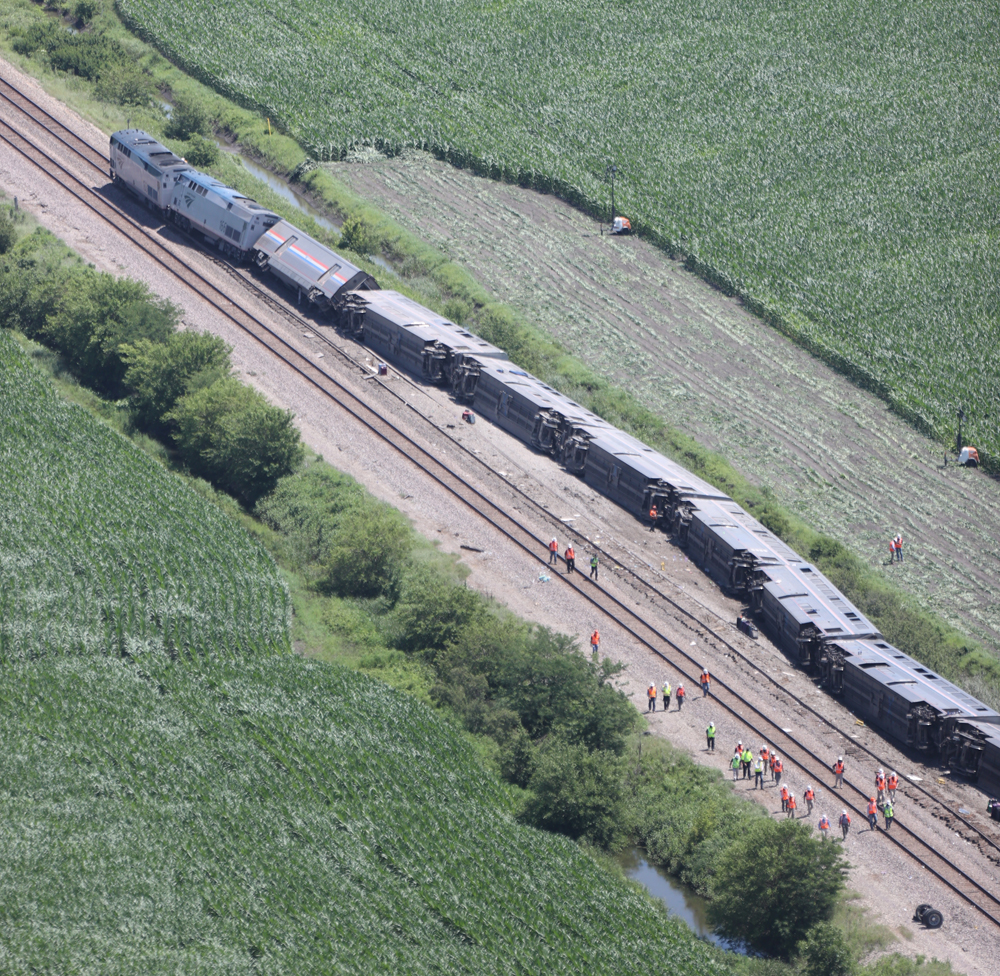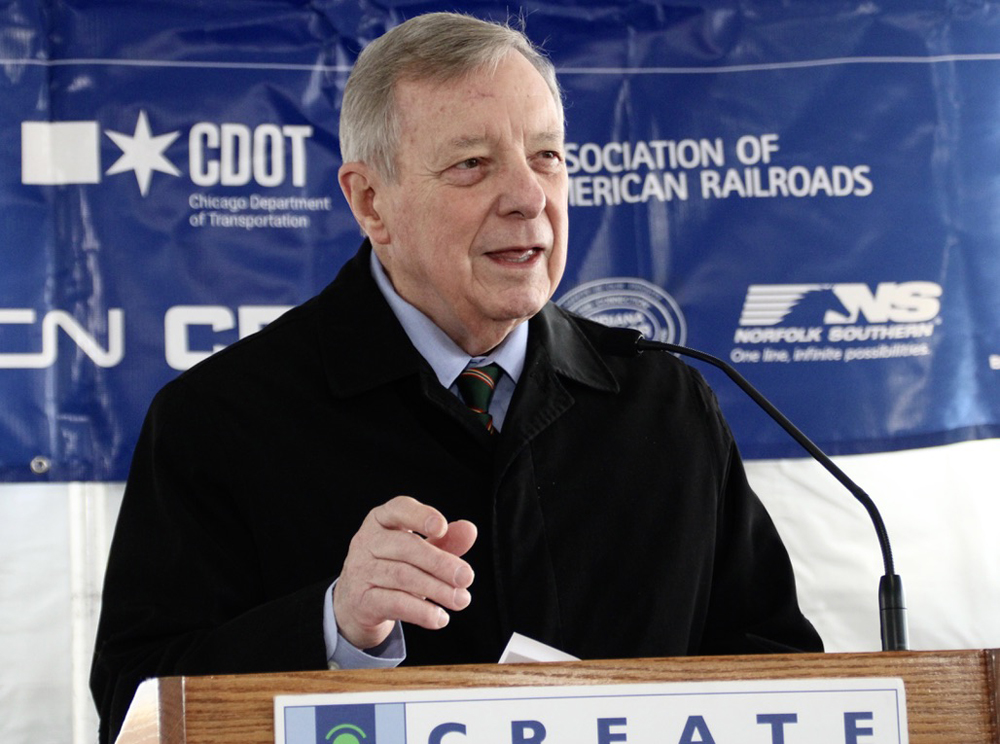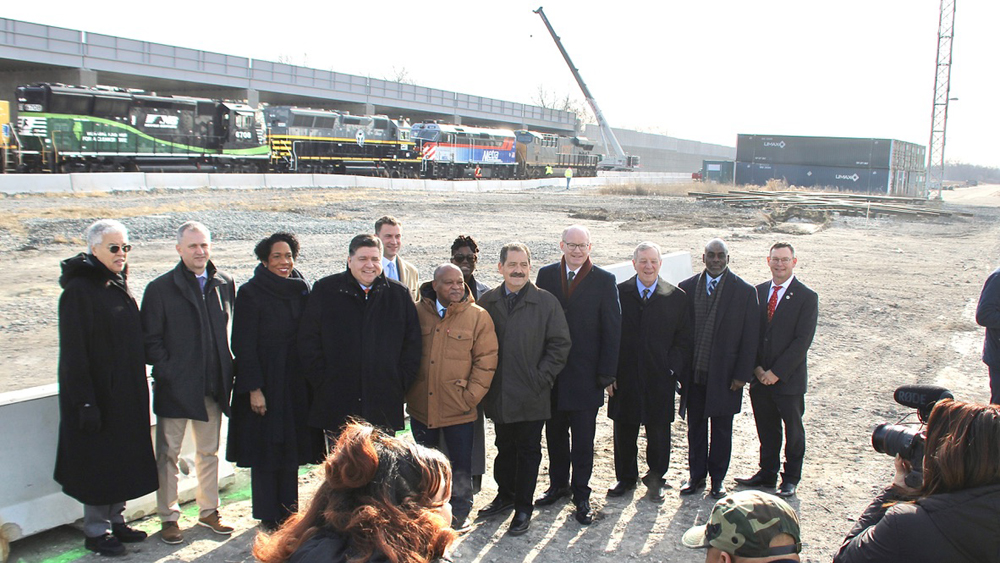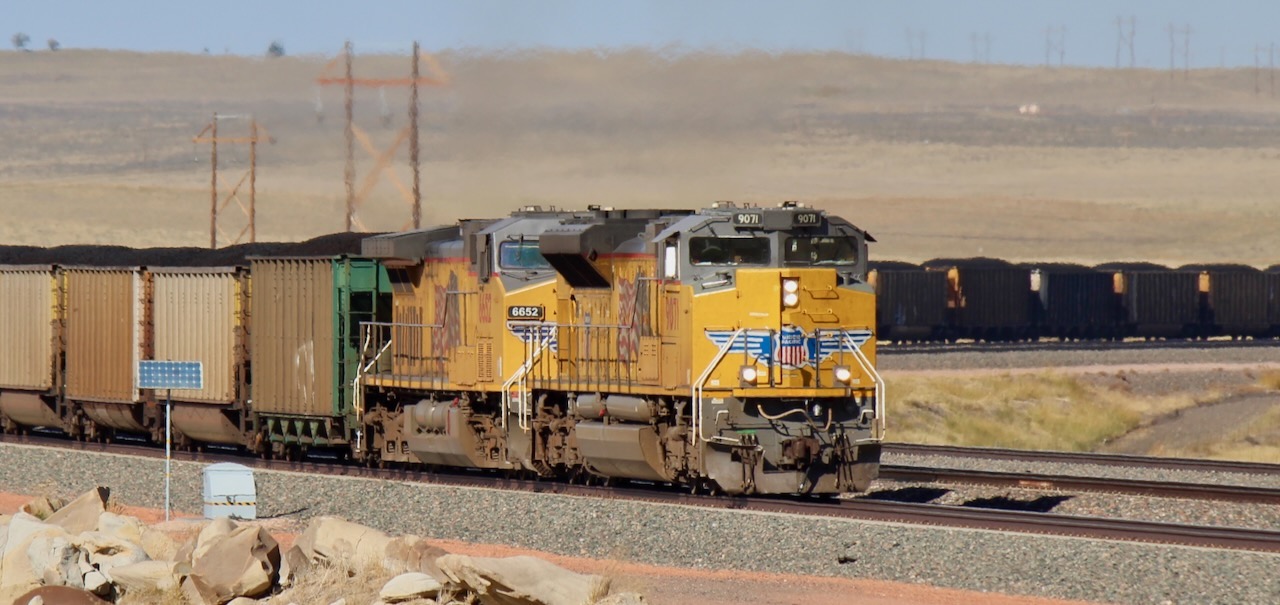
KEYTESVILLE, Mo. — A judge in Chariton County, Mo., has scheduled a hearing on whether to delay lawsuits over the June 27 derailment of Amtrak’s Southwest Chief while the National Transportation Safety Board continues its investigation into the fatal accident.
Meanwhile, an Amtrak employee has filed a suit claiming the passenger operator “intentionally” crowded the train beyond its capacity.
KMBC-TV reports the hearing to consider several motions to stay the lawsuits will be held Aug. 16.
MS Contracting, owner of the truck that was hit by the Chief, causing the derailment, first filed a motion last month asking for a delay [see “Owner of truck seeks stay …,” Trains News Wire, July 18, 2022]. The company argues it is prevented from commenting on the accident during the NTSB investigation, and that to proceed prior to the release of NTSB results would be “highly prejudicial” to the company.
KMIZ-TV reports that Amtrak service attendant Carilyn White has filed suit in Chariton County saying Amtrak filled the train “beyond its safe capacity” and did not address policies to prevent overcrowding. The suit names Amtrak, BNSF Railway, and MS Contracting as defendants. It claims Amtrak operated the Chief too fast for conditions, that BNSF did not adequately maintain the crossing, and that the truck owner was negligent because its employee did not operate the vehicle in a safe manner.
The preliminary NTSB report on the Chief derailment says 270 passengers and 12 crew members were on the train when it struck the truck and derailed near Mendon, Mo., killing four people [see “NTSB to look at crossing design …,” News Wire, July 22, 2022].













The overcrowding allegation strikes me as a new, creative way for an employee to cash in on the “Amtrak Lottery” in which an employee is involved in an incident resulting in a real or imagined injury and subsequent settlement.
As a former Amtrak product line director, I felt that any train without at least one more passenger than capacity was a lost opportunity. Amtrak regularly over-books to ensure no-shows and rescheduled passengers do not result in empty seats. Any passengers without seats were accommodated in the lounge until seats became available. It’s hard to see how this train could have be so overcrowded to have any impact on injuries short of a car being blanked due to a defect.
Tracy: The overboking is important for the one leg that is full. That keeps rest of legs more full.
Curious to know what is meant by overcrowded conditions on the train. Were there passengers standing in the aisles like a New York City subway train? The majority of Amtrak’s long distance trains run below capacity or work on reserved seating. Besides even there was such a case of overcrowding, that wasn’t what caused the derailment. Stick to the real issue and cause. Overcrowed Amtrak trains if really so is another issue to be debated and settled at another time.
Joseph Markfelder
t
1. Based on the consist, it should be factual whether the train was overcrowded.
2. Since NTSB has already found that the train was below the speed limit at the time of the accident, I don’t understand how anyone can argue that it was going too fast for conditions, especially considering the weather and visibility (as obvious from the photographs).
I think the point of the lawsuit with regards to “too fast for conditions” is the fact that their are no specific speed limits where crossing types are considered as a condition.
For urban crossings we collectively require controlled crossings to be present for safety purposes, this allows the consists to move faster. But in this case we had simple crossbucks protecting a crossing which allows 78mph running.
So the legal argument being made is that crossing types should be a condition for speed limits.
It will be interesting to see how this works out. Will it force the host railroads to close more unsignalled crossings, or force state DOT’s to put up more gates?
Neither…rural crossings are not an issue when it comes to speed limits, and I’m pretty sure the NTSB will not even mention that in the report. What they will mention is visibility from the road, from the train…and what exactly did the forward facing camera see(that will be very telling). As well as the part that the particular crossing involved was on the MODoT list of crossings needing work, but that wasn’t scheduled for another couple of years.